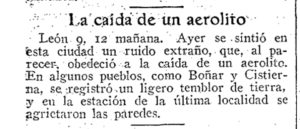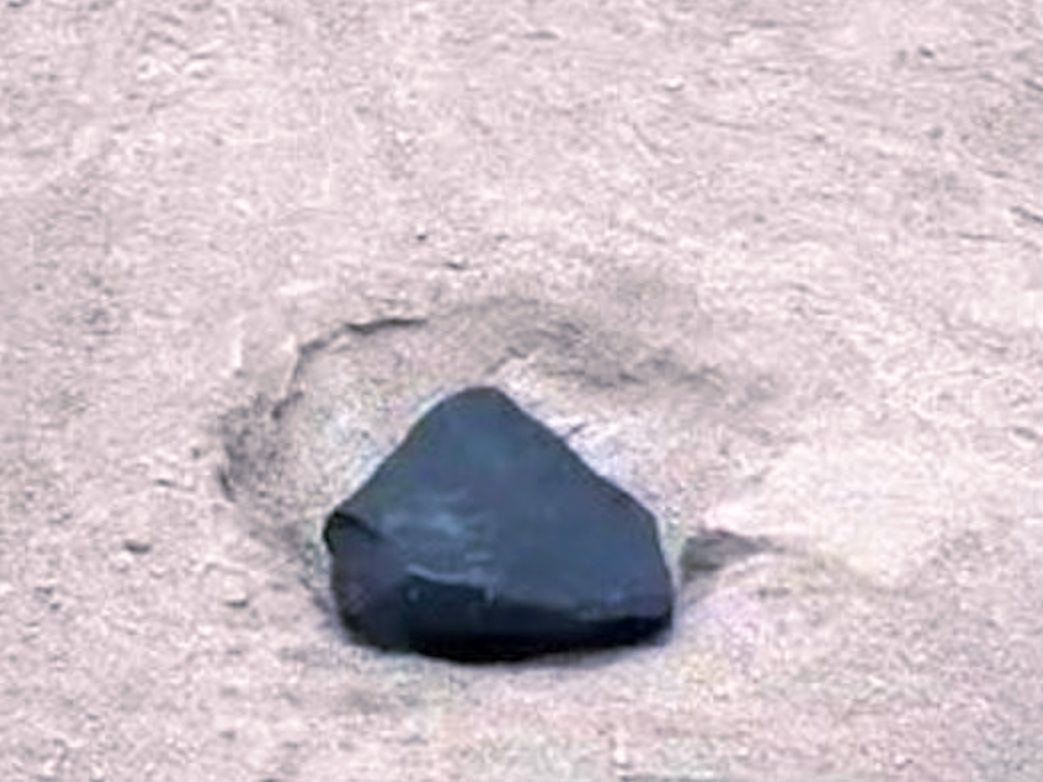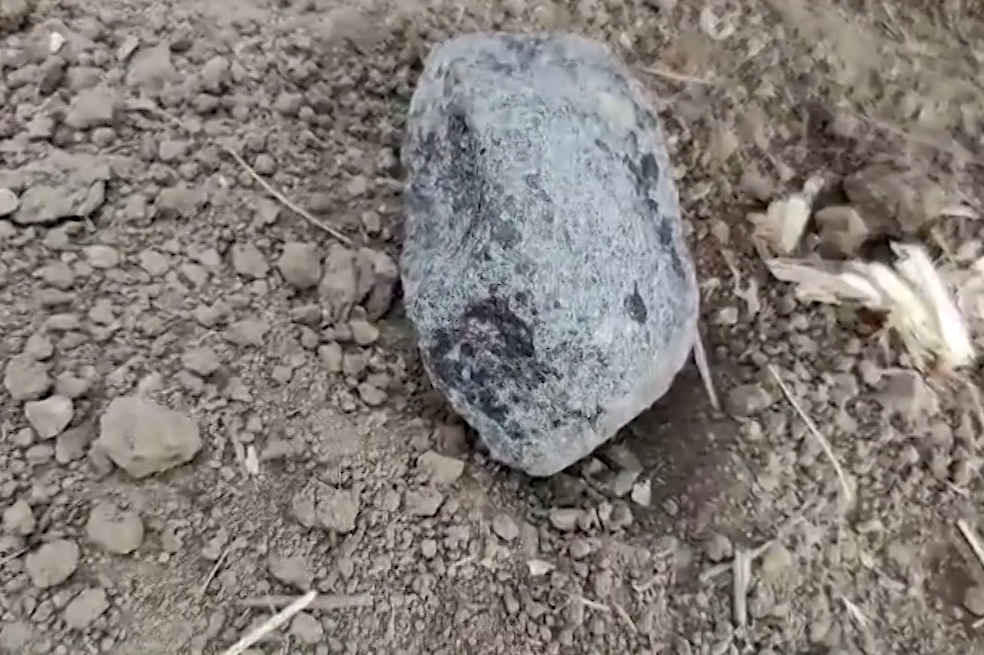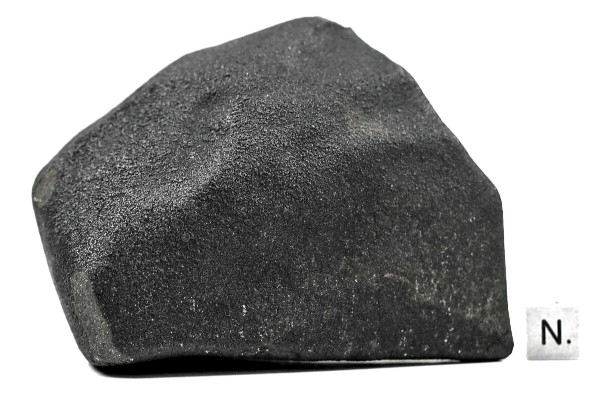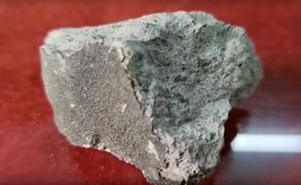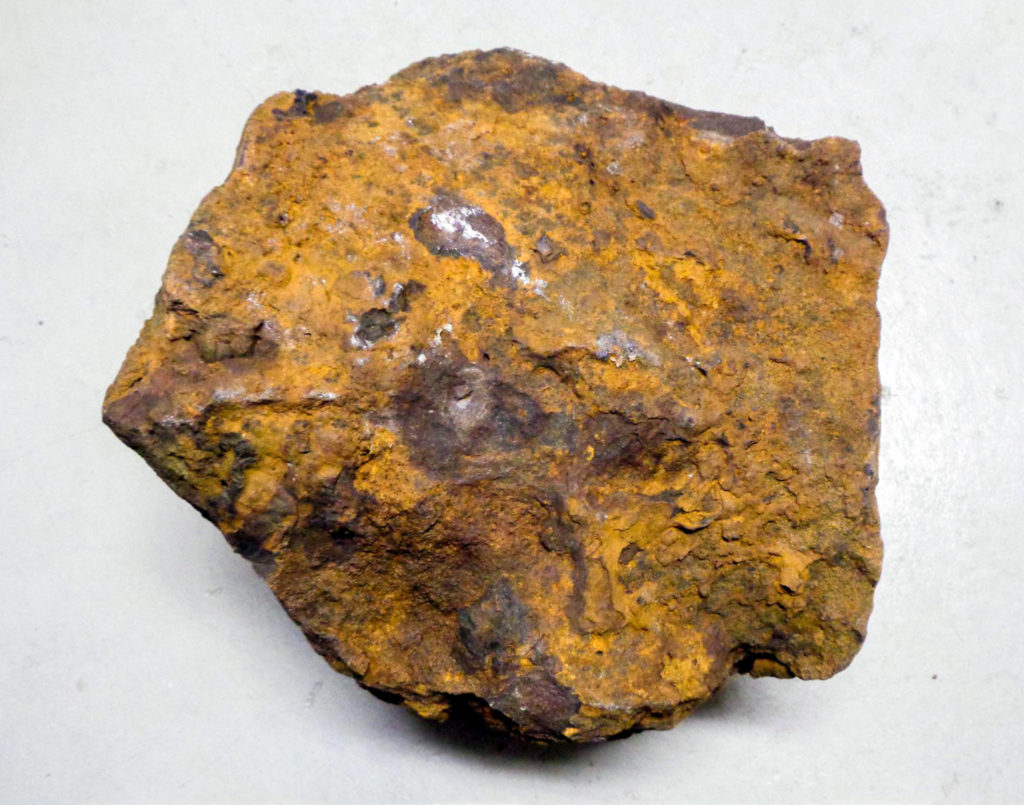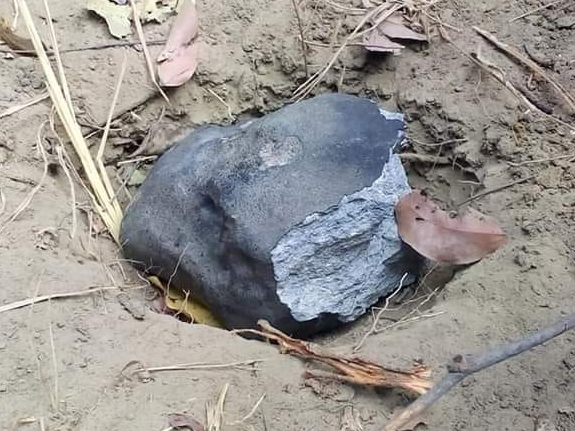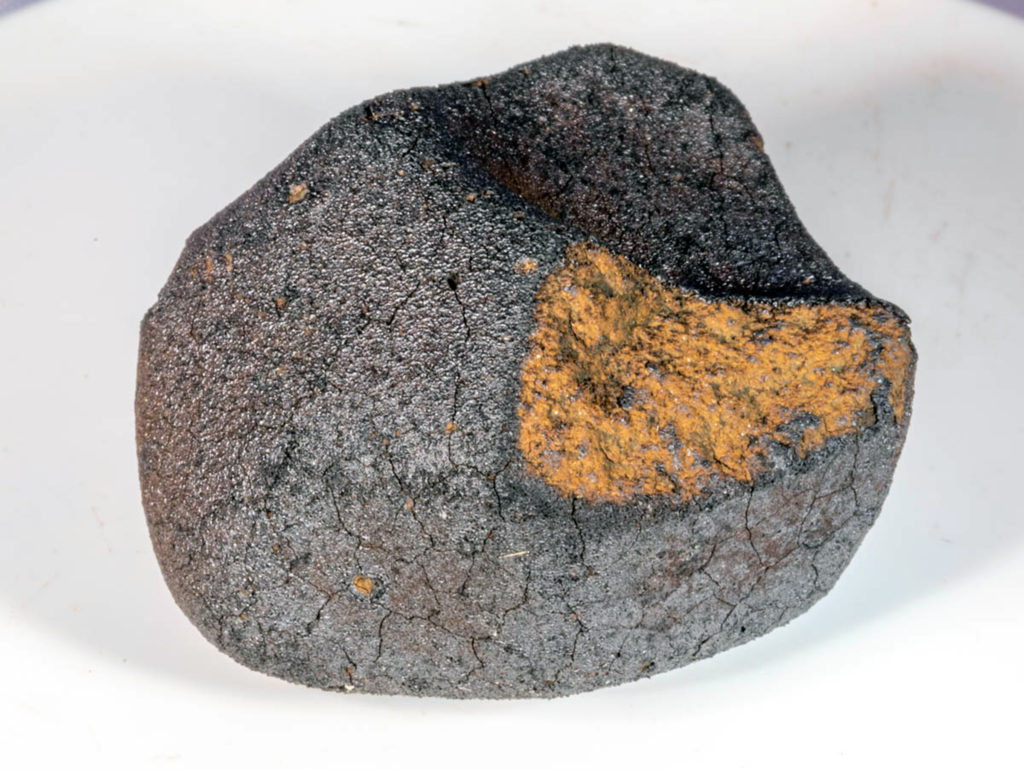ARDÓN
Fall (L6, S3, W0) in Ardón, Castilla y León, Spain at ~ 9:30 a.m. local time on 9 July 1931
Rosa González Pérez and the secret stone of her childhood
It happened on the 9th of July 1931 at about 9.30 in the morning (local time) in a slightly sloping street in front of the wooden gate of the two-storey house with the number 9 in the Calle del Morrillo in the village Ardón (42°26’10.74″N, 5°33’42.58″W), which is situated about 18 km to the south of Léon in Spain. 11-year old Rosa González was told by her mother to take the lunch to her uncle Gregorio who was working in a wine cellar. It is said to have been an unusual day. Thunder rolling could be heard in the sky and an
unusually dark dust trail was noticeable, most likely in northeastern direction. According to Rosa González it did not sound like a typical thunder rolling. She herself describes it as: “Hacía ‘pas, pas’ y despedía como humo”. Furthermore she believes she heard a sound “como de un avión”, that sounded like an airplane. Having walked about 200 meters from her home Rosa apparently found shelter under a projecting roof covering the pavement to wait “que se pasó” until it would be over.Then she continued her walk and suddenly heard a clattering noise behind her on the street. She turned around and saw a little black stone on the street next to the kerb. First she thought someone had thrown the stone at her but could not see anybody. She picked up the 5.48-gram oval stone that was about 23 mm long and 16 mm broad and noticed that it was too hot to play with. She believed the stone could have been ejected from one of the chimneys of one of the houses around but could not see any in use. First she wanted to leave the stone behind but her curiosity made her keep the stone whose metal grains glittered temptingly inside the meteorite’s light grey matrix revealed by a small ‘window’ in the fusion crust. Rosa went to the wine cellar in which her uncle was working and showed him the stone, which according to Rosa was still so warm that she had to cool her hands at a bottle of wine to be able to hold the stone in her hand.
Back at home in Calle el Cueto 21 (25) she showed the stone to her aunt and her mother who were said to have been impressed by it but were incapable of telling her what kind of stone it was. “Who do you think would throw a stone at you?”, they asked. Later neighbours were told about the stone. The next day priest Don Pedro came to visit the family and when he saw the stone he told Rosa that it had to be a meteorite. He said he had heard about the meteor on the radio. The dust trail in the sky had come from the ‘fire’ that one could have seen as a flame in the sky if it had happened during the night. Rosa put the stone in a little box in which it was stored together with old medallions and broken necklaces until about 2009 .
Already about three decades ago Rosa told her nephew José Antonio González about the story of her find. In 2013 José remembered the story because of what he had seen about meteorites in TV documentaries, among which were probably images of the Chelyabinsk meteorite. He thought that Rosa’s stone could be scientifically important. That is why he contacted Josep Maria Trigo and sent photos of the specimen.
In press reports from 1931 the bolide above Léon was described by eye-witnesses as follows:
According to a teacher the bolide passed with a “tableteo fuerte seguido de seis u ocho truenos empalmados”, a rattling or clacking with six or eight subsequent thunderclaps. Others described the bolide high in the sky as “una llama ardiendo y rugiendo y echando humo”, a burning, roaring and smoking flame.
On July 10, 1931 the following short message was published in the left column of page 42 in the newspaper A B C VIERNES, EDICIÓN DE LA MAÑANA: “La caida de un aerolito – León 9, 12 mañana. Ayer se sintió en esta ciudad un ruido extraño, que, al parecer, obedeció a la caída de un aerolito. En algunos pueblos, como Boñar y Cisticrna, se registró un ligero temblor de tierra, y en la estación de la última localidad se agrictaron las paredes.”
On April 10, 2014 the Spanish National Research Council (CSIC) published a press release about the meteorite. On the same day Rosa Gonzáles was interviewed live via phone in the morning show La mañana on channel TVE-La 1 at 11.47 am. On July 26 abstract number 5068 “ARDÓN: A LONG HIDDEN L6 CHONDRITE FALL” is published online to go with Dr Josep M. Trigo-Rodríguez’s (Grup sobre Meteorits, Cóssos Menors i Ciències Planetàries de l’ICE ) talk at the 77th Annual Meteoritical Society Meeting in Casablanca (Marruecos) ( 2014 ). On August 13, 2014 the article “The Ardón L6 ordinary chondrite: A long-hidden Spanish meteorite fall.” By Trigo-Rodríguez, J. M., Llorca, J., Weyrauch, M., Bischoff, A., Moyano-Cambero, C. E., Keil, K., Laubenstein, M., Pack, A., Madiedo, J. M., Alonso-Azcárate, J., Riebe, M., Wieler, R., Ott, U., Tapia, M. and Mestres, N. was published in Meteoritics & Planetary Science, 49: 1475–1484. doi: 10.1111/maps.12344.
More than one gram of the meteorite was donated to the Museo Nacional de Ciencias Naturales. A fragment of 0.3 grams will be on public display in the meteorite room of the Museo Nacional de Ciencias Naturales. In addition, there will be a replica of the whole meteorite. The remaining mass of 3.528 grams was returned to the Gonzáles family who considers giving the specimen to another museum possibly in Ardón or León.
The Ardón L6 ordinary chondrite: A long-hidden Spanish meteorite fall
Trigo-Rodríguez, J. M., Llorca, J., Weyrauch, M., Bischoff, A., Moyano-Cambero, C. E., Keil, K., Laubenstein, M., Pack, A., Madiedo, J. M., Alonso-Azcárate, J., Riebe, M., Wieler, R., Ott, U., Tapia, M. and Mestres, N.
Meteoritics & Planetary Science
49, Nr 8, 1475–1484 (2014)
DOI: 10.1111/maps.12344
PDF LINK (full text) or LINK (full text)
Ardón – La inesperada recuperación de un meteorito caído en 1931
Carles E. Moyano Cambero , Josep M. Trigo Rodríguez , Jordi Llorca
Astronomia, diciembre 2014 | nº186, pp. 23-29
MEDIARADIO
Radio Televisión Española (RTVE) – Radio 5 actualidad – 83 años con un meteorito (10 April 2014)
Interview with Dr Josep M. Trigo-Rodríguez
NEWSPAPERDiario de León (8 April 2014)
PROVINCIA – DEL PUEBLO AL CIELO Un meteorito llamado Ardón
Diario de León (8 April 2014)
Diario de León (10 April 2014)
PROVINCIA – LA HISTORIA DEL METEORITO LLAMADO ARDÓN
“El 9 de julio de 1931, a las 9.30, una enorme bola de fuego sobrevoló la provincia de León”
Diario de León (10 April 2014)
Diario de León (11 April 2014)
PROVINCIA «Aquello que viste, Rosa, ese humo en el cielo, era fuego»
Diario de León (11 April 2014)
Diario de León (11 April 2014)
PROVINCIA – LA HISTORIA DEL METEORITO LLAMADO ARDÓN
Ardón viajó por el Sistema Solar durante 26 millones de años antes de llegar a la Tierra
Diario de León (11 April 2014)
ABC, Castilla y León (11 April 2014)
ABC, Castilla y León (11 April 2014)
El PAÍS (10 April 2014)








